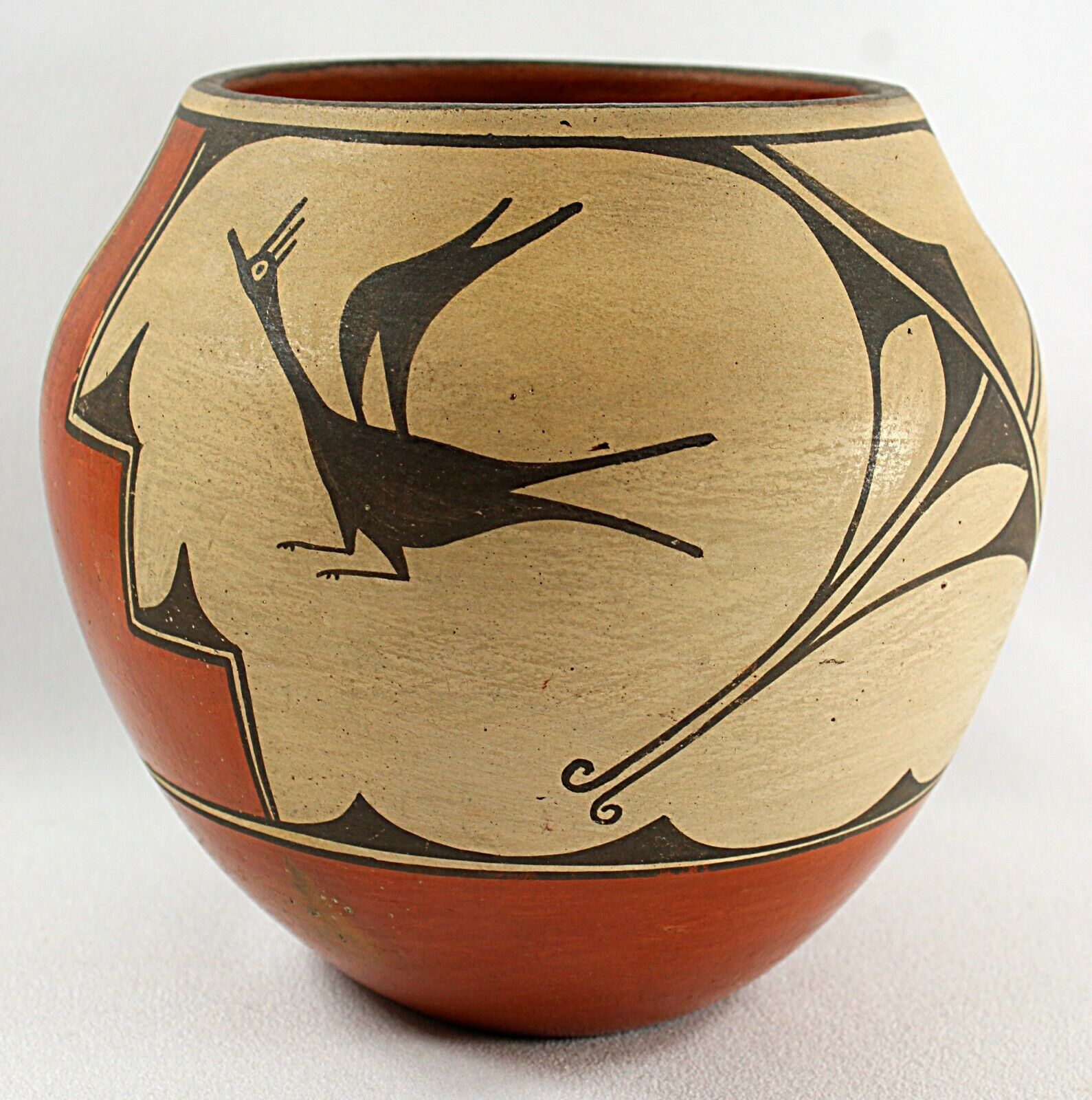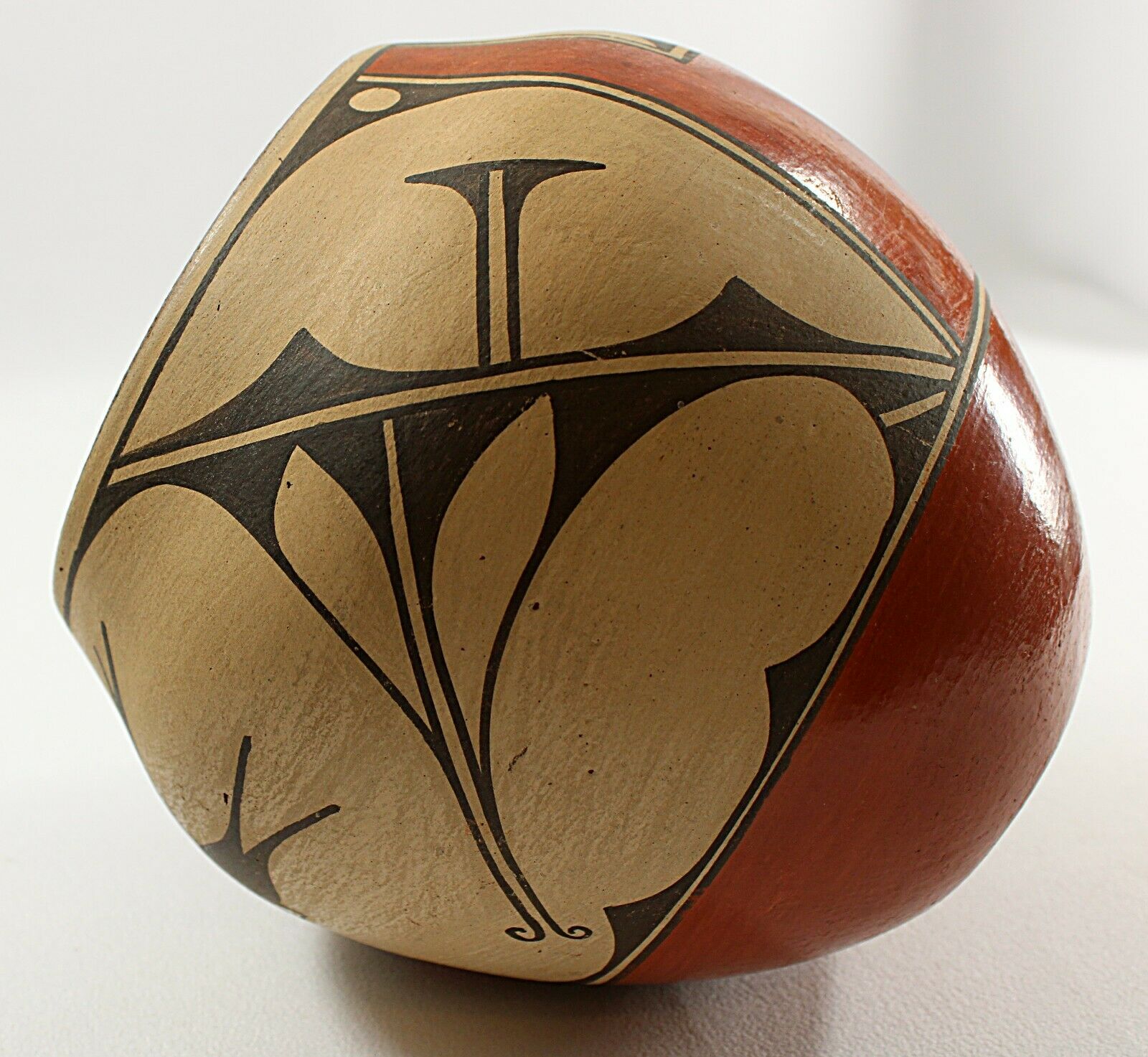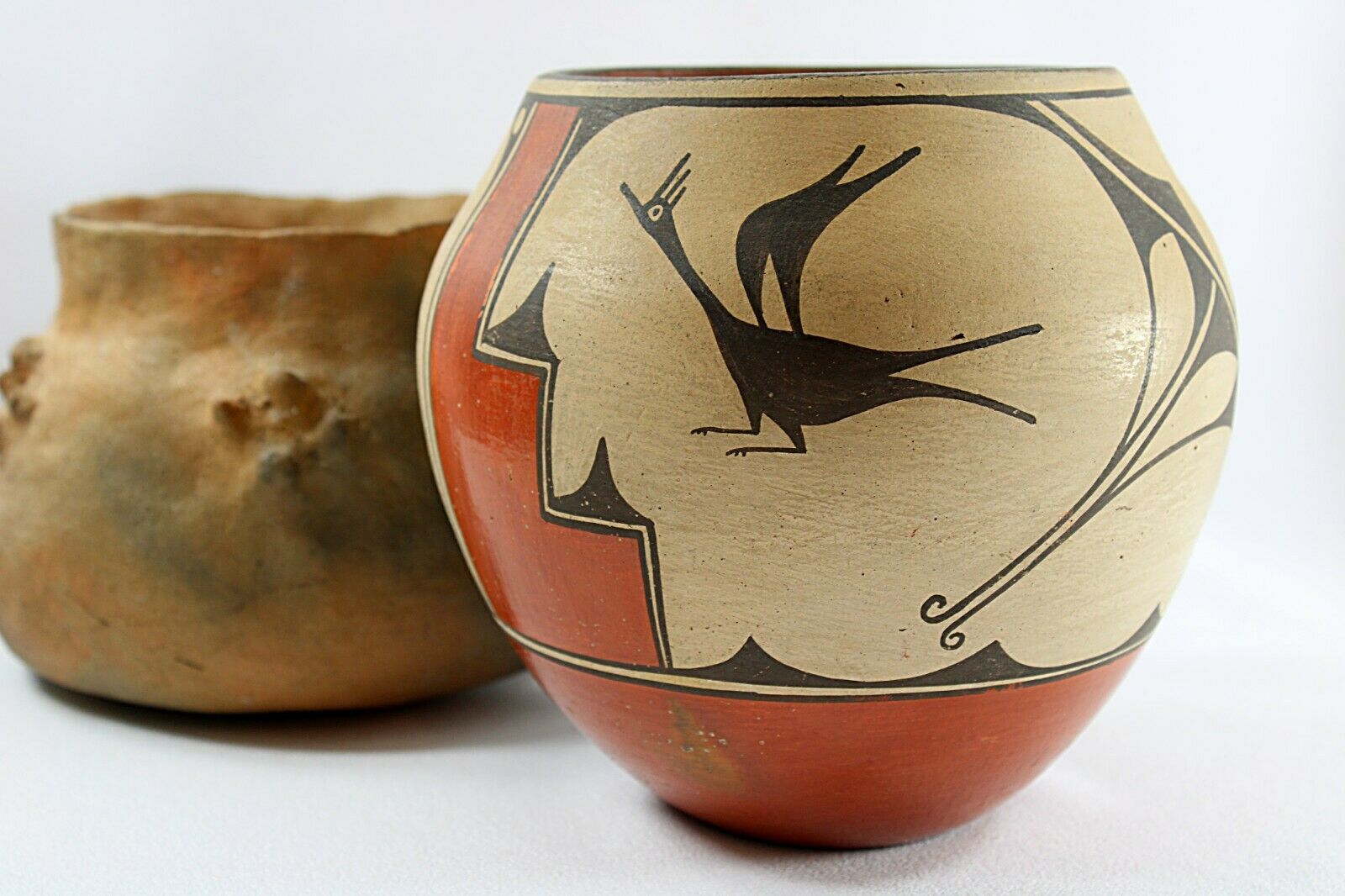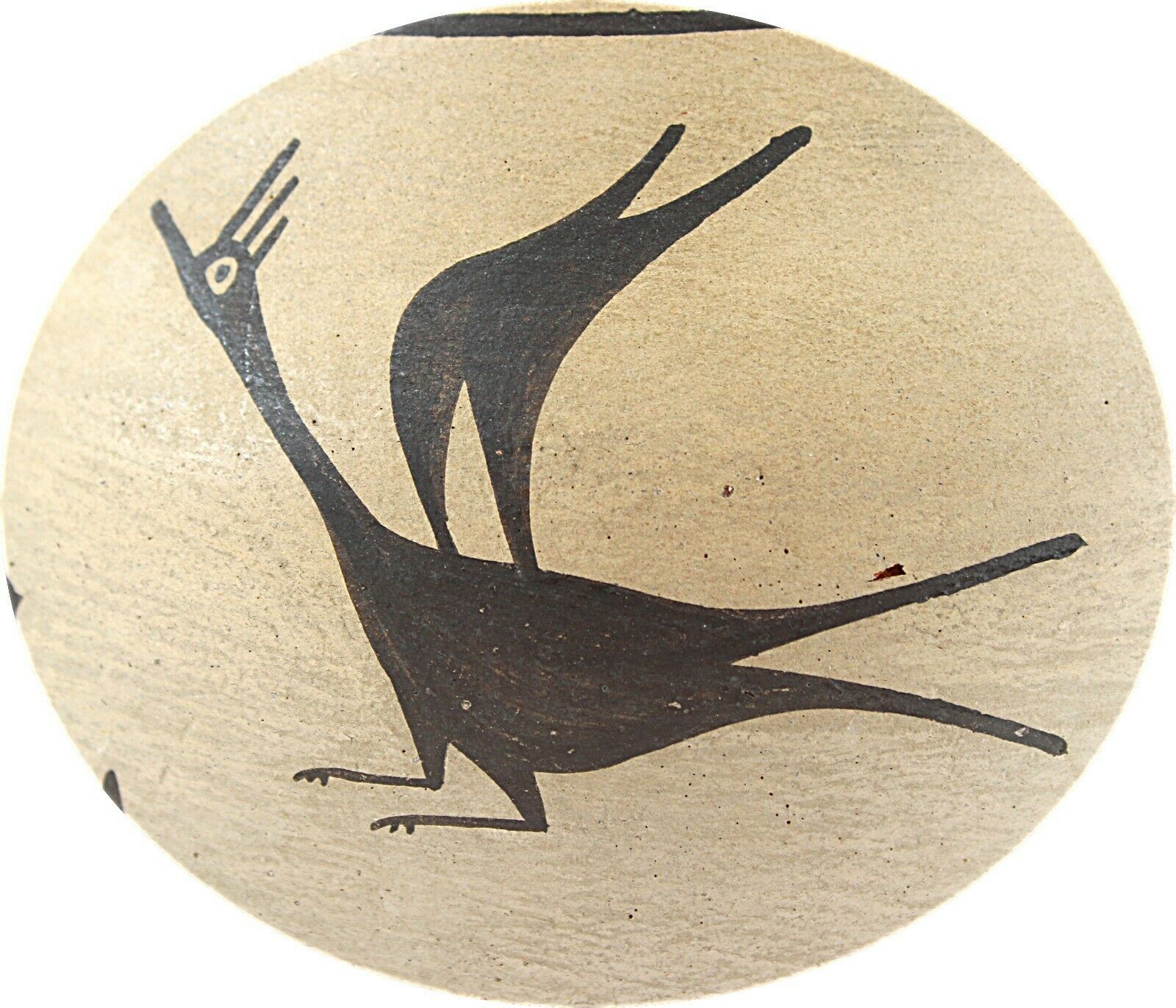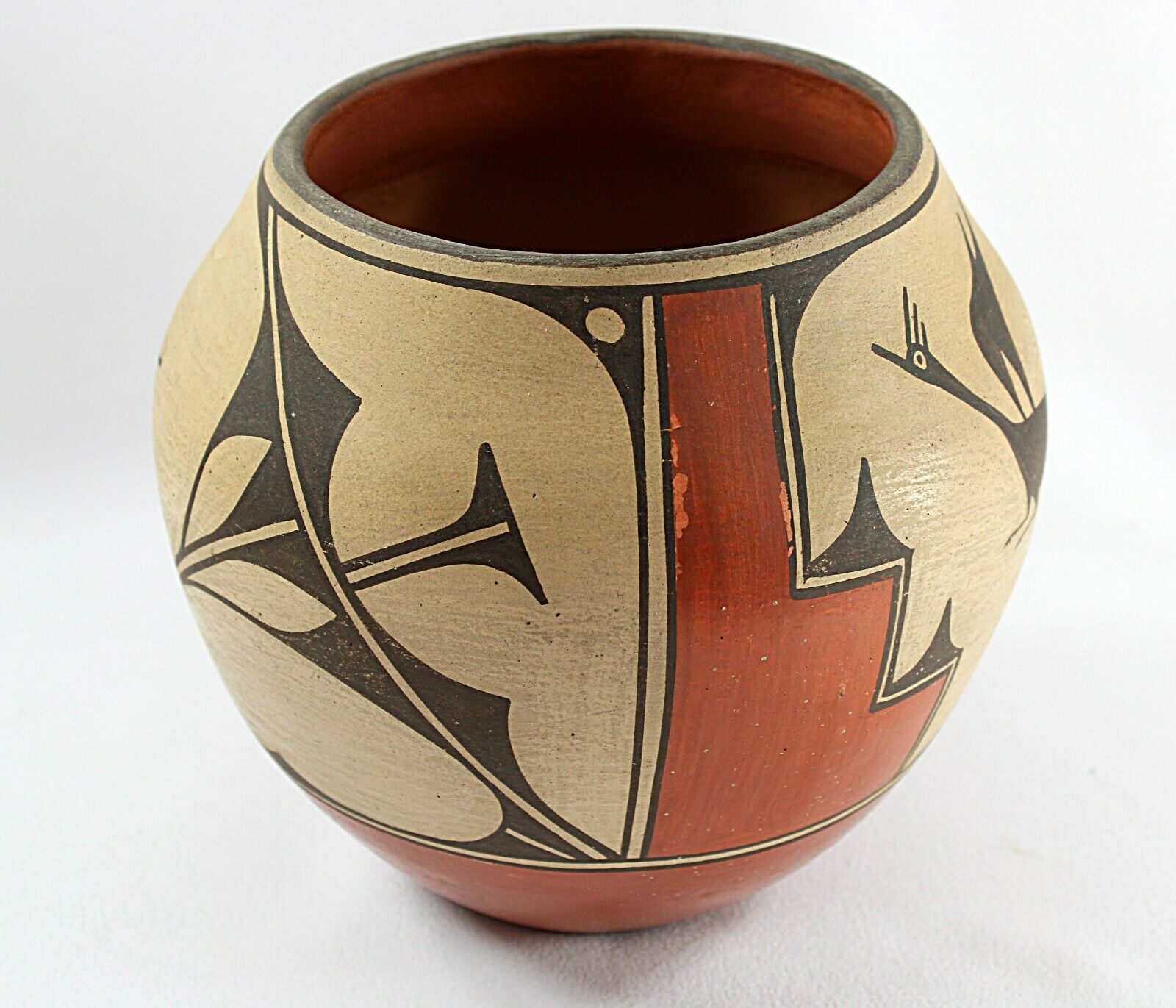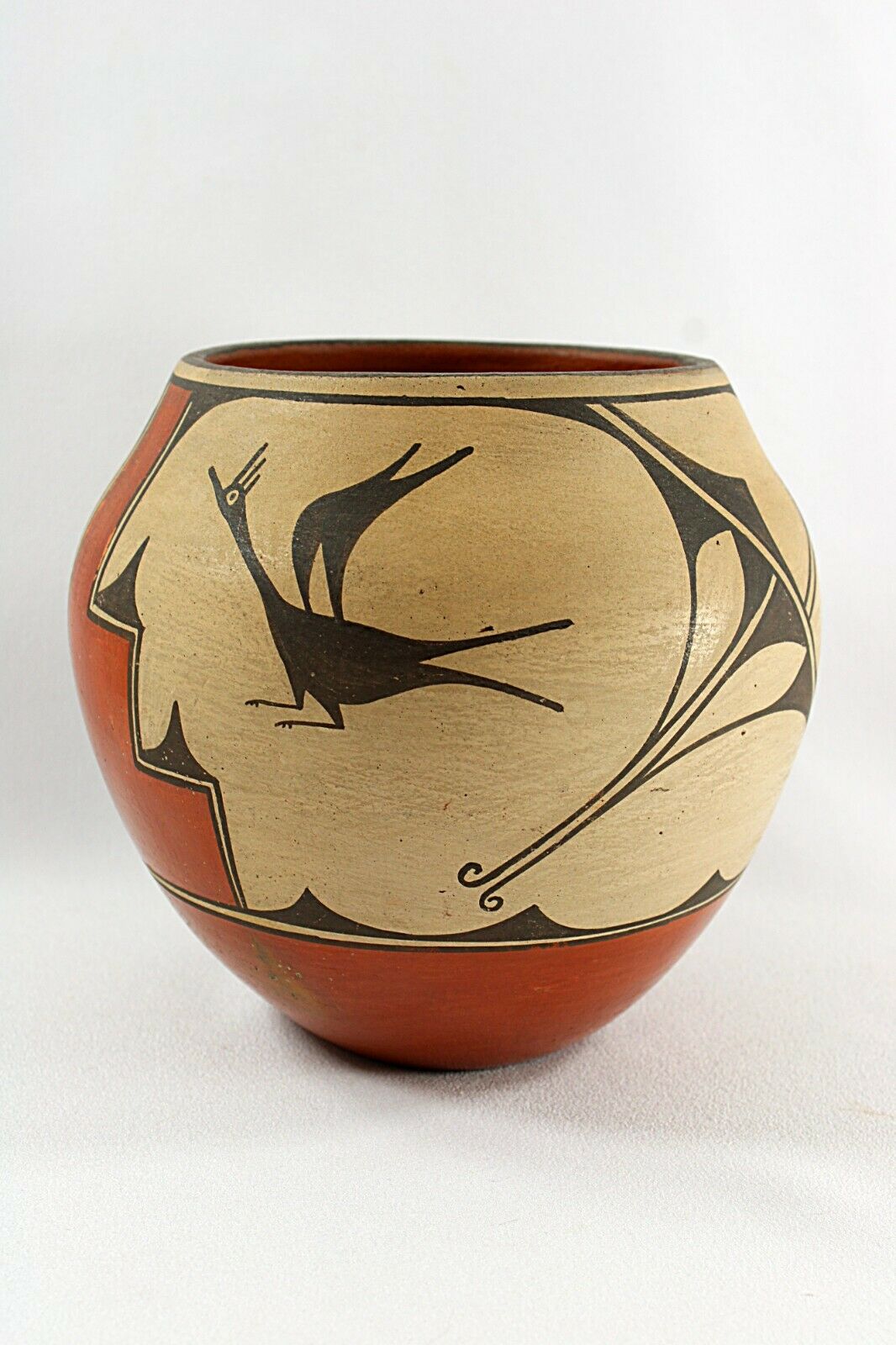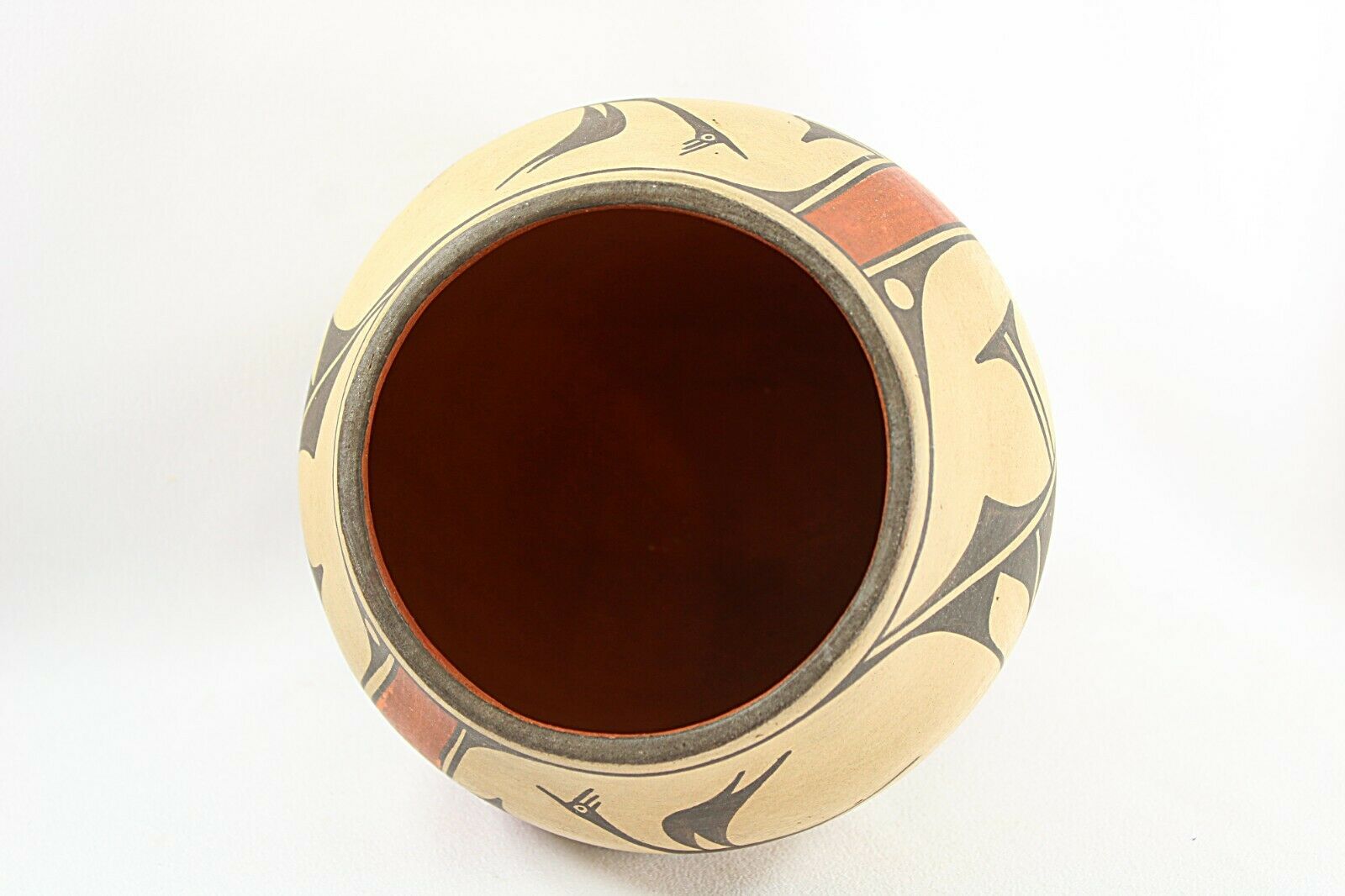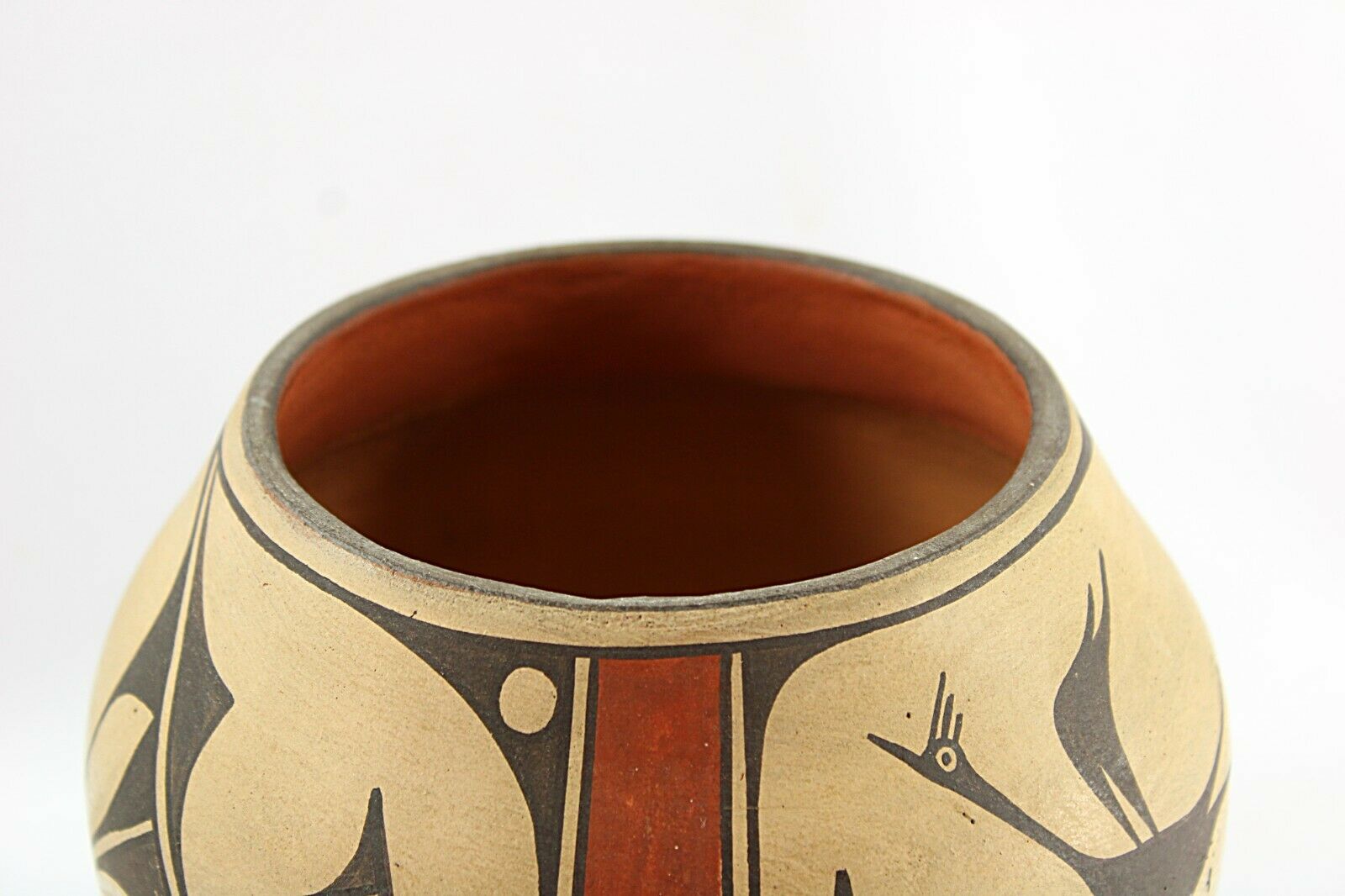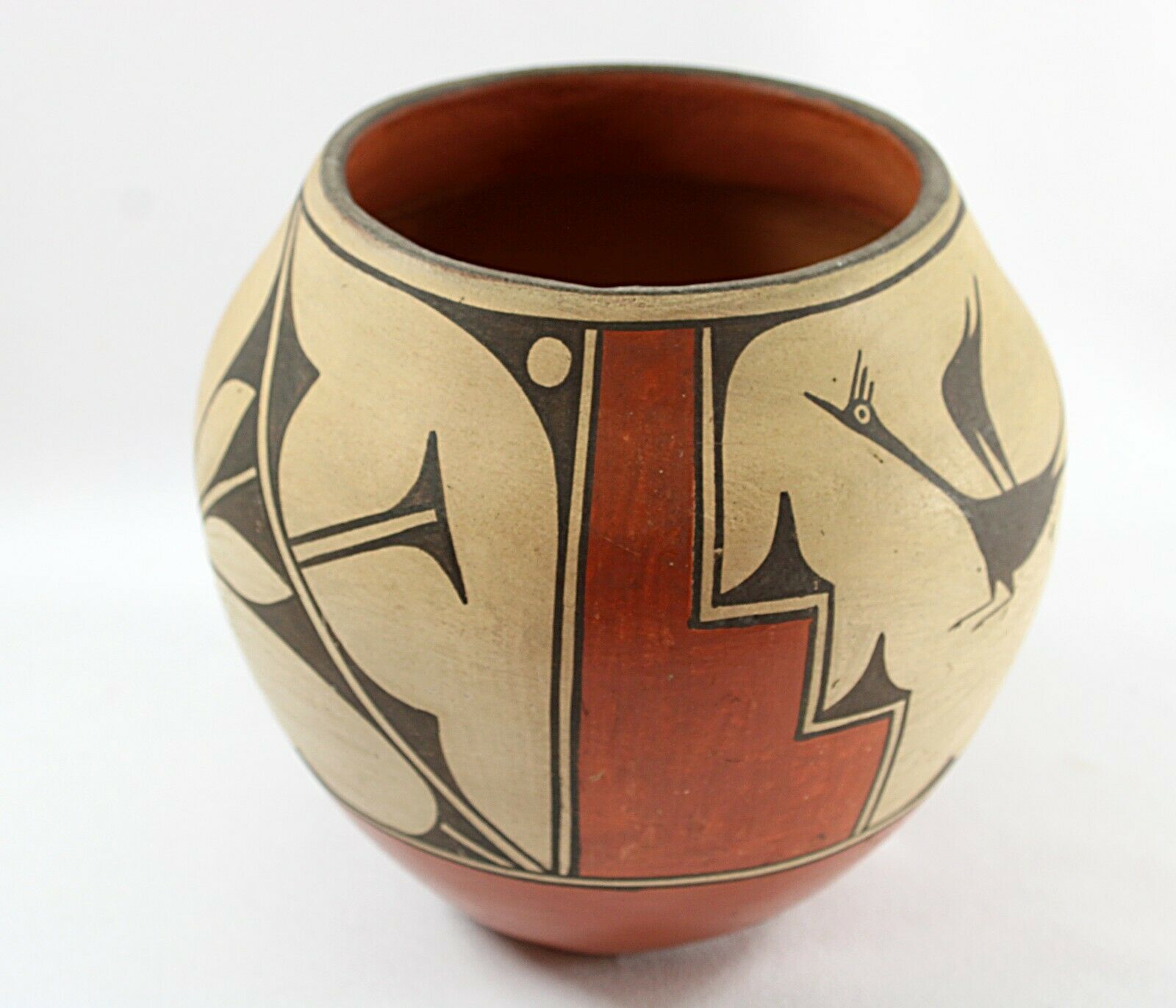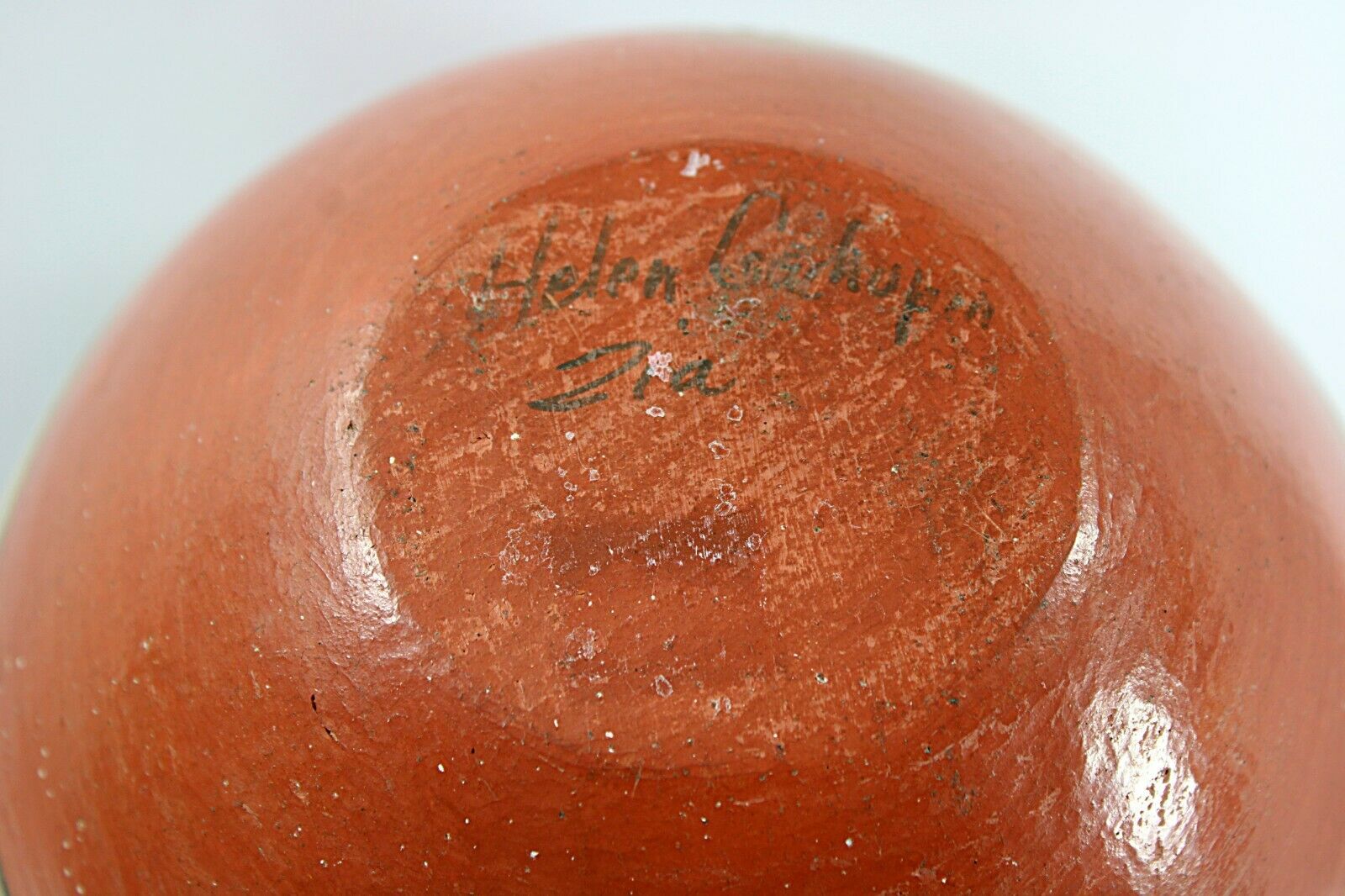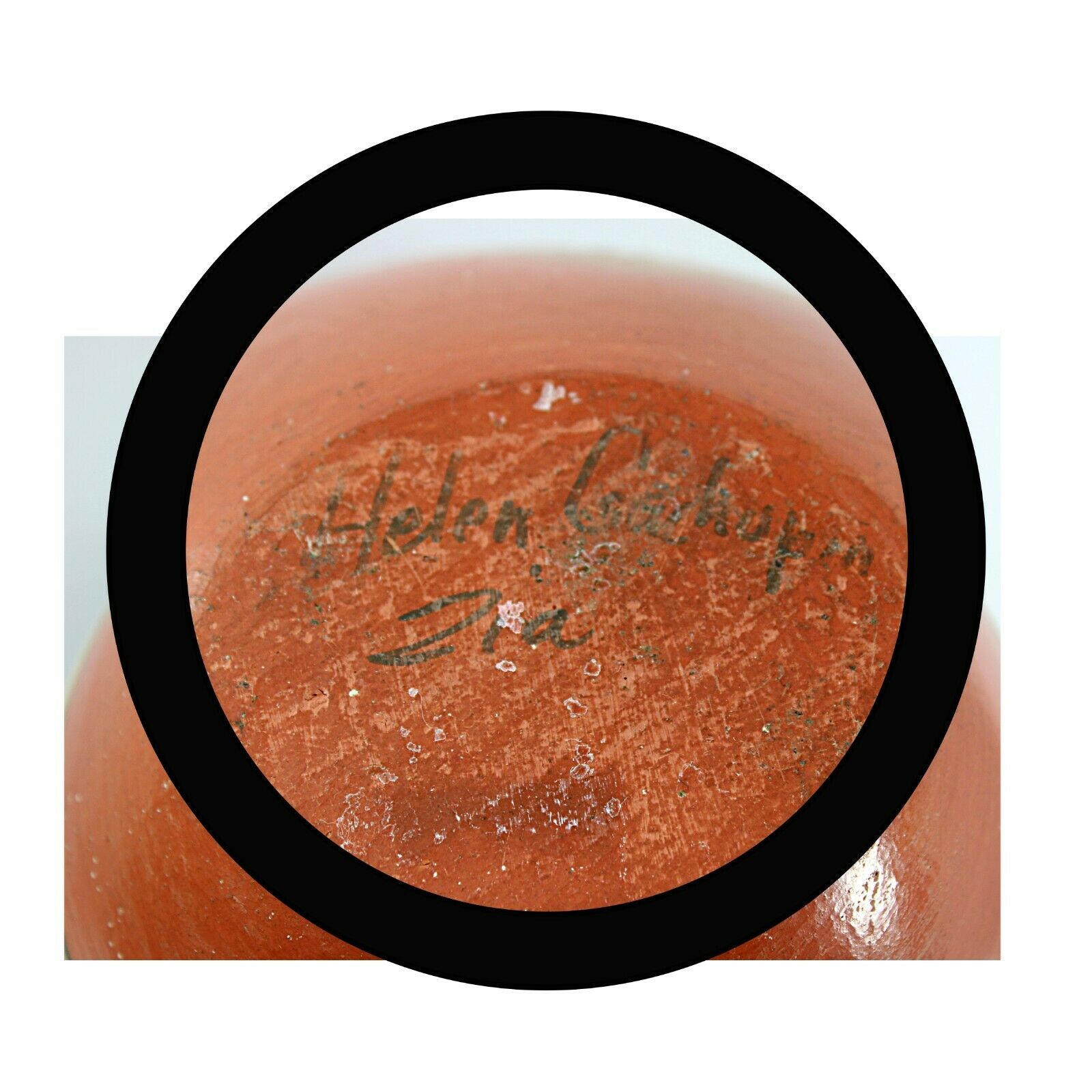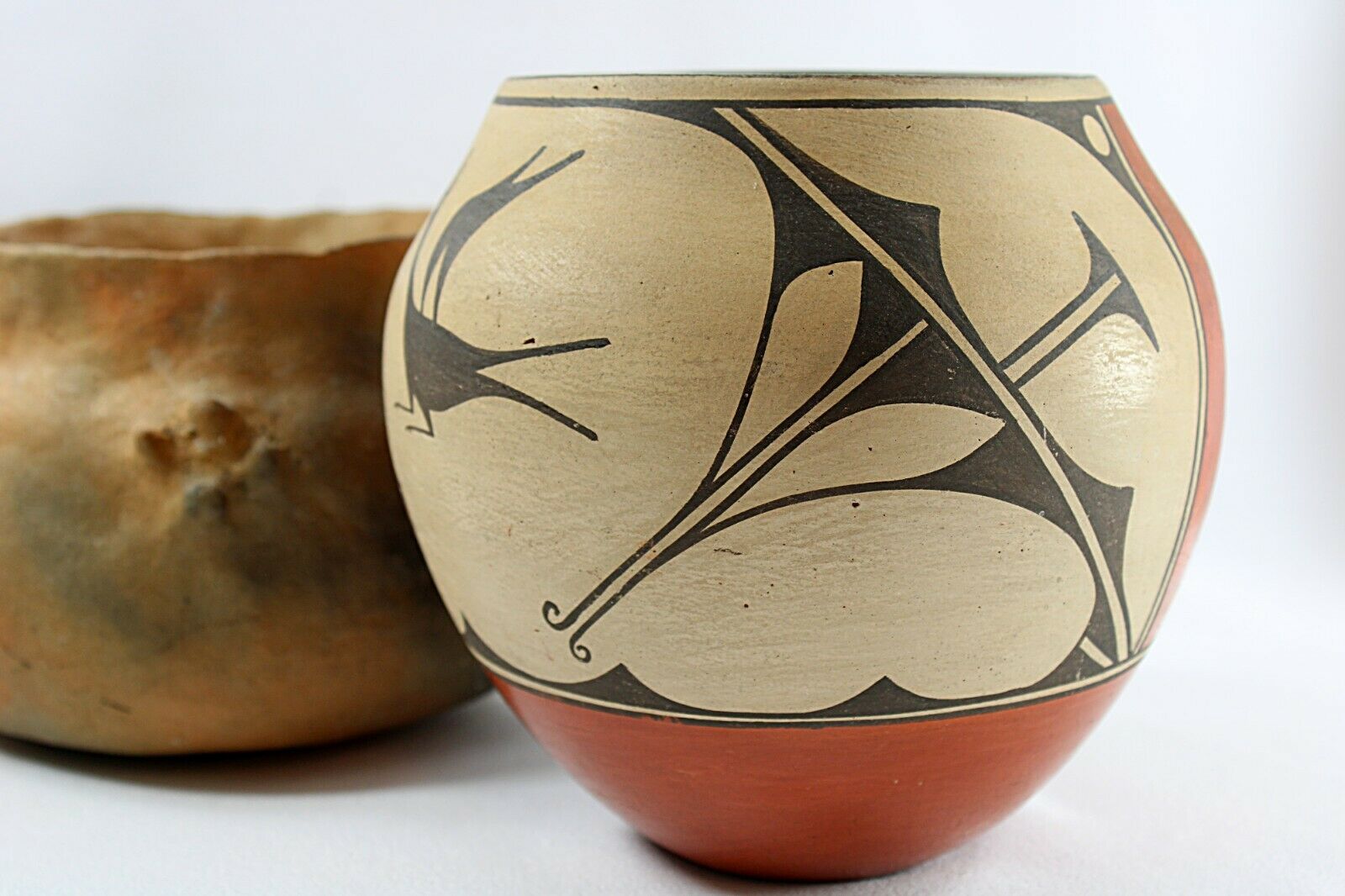OVERVIEW
Vintage item
Helen Gachupin made her handsome pottery from the 1950's into the 1980's. Helen was born in 1932 and lived in San Ysidro, New Mexico, at the Zia Pueblo with her mother, potter Andrea Toribio Gachupin, and her father Jose Gachupin, along with her 3 brothers and her sister Gloria (married name Chinana), who became a potter as well. Famed Zia potter Rosalie Medina Toribio was their grandmother; she also lived in San Ysidro and passed away in 1950 at the age of 91, so it's possible her granddaughters watched her making pottery, but they learned their craft from their mother. Helen died, unmarried and childless, in 1992.
In 1979, pottery by Helen and Gloria was in the "One Space/Three Visions" exhibit at the Albuquerque Museum. In 2015, a pot of hers was chosen to represent Zia pottery at an exhibition of Native American pottery at the The Mitchell Museum of the American Indian in Evanston, Illinois. Collections at the Heard Museum in Phoenix, the Maxwell Museum of Anthropology in Albuquerque and the Peabody Museum of Archaeology and Ethnology in Cambridge, Massachusetts include examples of Helen's pottery.
This stone-polished olla is classic, traditional Zia polychrome pottery in red and black on cream slip and red slipped interior. The roadrunner, the most prominent motif in Zia pottery, is framed by a stepped design and a stylized black bird with widespread wings and curled feet, a somewhat unusual design that is identical on both sides. It's signed on the bottom "Helen Gachupin Zia." The piece was accompanied by a slip of paper from the former owners that notes "$37.00 in 1971," which we assume is the year they bought it and the price they paid. We'll send the paper along with the olla to the buyer.
The pottery piece stands 7 inches tall and 7 inches across, with a 22 inch circumference and a 2 1/4 inch base. It weighs 2 pounds 9 ounces and is in excellent condition, with the following caveats: rubbing on the red paint of upper step design (pictured) and one area of pitting beneath that to the lower right on the red painted underbody section, also pictured. There are no chips, cracks or hairlines. Helen Gachupin was not as prolific a potter as her relatives, so consequently her pieces are uncommon and desirable.
© PrimpingYourHome
PYH 5101
NATIVE AMERICAN
ACOMA POTTERY JAR BY PAULA ESTEVAN
This eye dazzler was hand made by Acoma potter Paula Estevan. Paula was born in Acoma Pueblo in 1967. She learned the art of making pottery in the traditional way from her mother, Patricia Estevan, and from Mary Chino and Victoria Garcia. She's been producing pottery since 1986. Paula’s hand coiled pots are exceptional examples of Acoma pottery with perfect shape and fine, thin walls. Her design process involves selecting a single Acoma design element and repeating it in an extremely fine progressive pattern across the entire surface of the pot. A unique addition to any pottery or Native American art collection.
Signed
4 5/8” tall x 6 3/8″ long x 6 3/8″ wide
Artist card included
The pottery is new but hand made and painted, so there may be imperfections. We try to capture every side in the photos but if you have any questions, please contact us.
Acoma Pueblo is regarded as the oldest continuously inhabited community in the United States. Traditional pottery of Acoma is strongly recognized for fluted rims, thin walls and geometric design. Acoma pottery is made using a slate-like clay found within the hills surrounding the Pueblo. When fired using traditional methods, this clay allows the potters to form very thin walls, a common and sought after characteristic of Acoma pottery.
NATIVE AMERICAN POTTERY
Specifics
- Culture: Native American: US
- Handmade: Yes
- Tribal Affiliation: Zia
- Featured Refinements: Famed Zia Pueblo Potter
- All returns accepted: ReturnsNotAccepted
- Artisan: Helen Gachupin
- Country/Region of Manufacture: United States
- Origin: New Mexico
- Condition: Vintage
